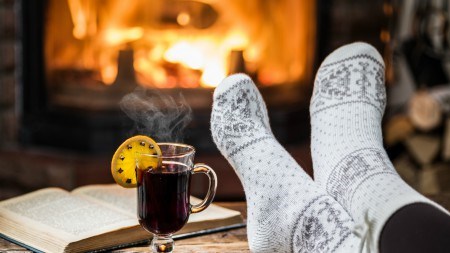Don’t wait, insulate
As the cooler days and nights approach, keeping your family warm becomes a priority. While you may think it’s time to pull out the heaters and light up a warm fire, there’s one significant winter prep step you should not forget: check your home’s insulation. It’s completely invisible in your everyday life, but it becomes an all-important element of life during winter. If you’re not keen to take a look yourself, call in a professional to conduct an inspection. We recommend that installing or fixing your ceiling insulation be done by a professional. Adding to, improving, or fixing, your home’s insulation will help to keep everyone warm, and keep your utility costs down.
Tip: While you’re inspecting the ceiling insulation, also check for any broken or slipped roof tiles.
Inspect and check
While you’re on the hunt for winter household worries, conducting a brief inspection of your home’s exterior is also important. Walk around the outside of your home and check every window for small gaps and cracks. It’s best to do this on a windy day, and have someone on the inside to help you along the way. Close each window and then conduct a ‘draft check’ to see if there any gaps or cracks that may not be immediately visible. Conduct a similar check for each door that leads out to the outside of your home, and pay special attention to the bottom of each door. If you find any gaps or cracks, fix them up to seal in the interior warmth on the colder nights.
Keeping the costs down
Winter is a typically more expensive season for utilities. Keeping your household costs down is imperative. Determining the best way to save money in the long run may also require a pre-season inspection, but that will be worth it for winter. We recommend:
- Checking your geyser: You’re probably already well into the routine of turning your geyser on and off at particular times of the day. Now’s the time to think about installing an automated geyser regulation system, that manages this for you. Ask your plumber or geyser specialist about insulating the pipes leading out from the geyser too, and whether or not installing a geyser blanket would benefit you.
- Cleaning your windows: You might find that idea laughable, but as more natural light enters your home, the less likely you are to turn on lights during the day. While you’re doing a dust and clean, don’t forget to wipe the dust off your lightbulbs too - that’ll help make every room brighter, without needing to turn on additional lights.
- Dumping the dryer: Warm towels and blankets feel oh so wonderful on a winter’s night, but dumping the tumble dryer will help you save money in big ways. Rather than relying on your tumble dryer, adjust your laundry schedule so that you can take advantage of the rain-free days to get laundry dry. It’s worth the effort when you see your decreased utility bills!
- Checking your air-conditioner: If you have an air-conditioner that’s your lifesaver during summer, don’t neglect it during winter. It probably won’t be switched on this season, but keeping it in good operating condition is important. If possible, close the vents on your air-conditoner’s condenser, or cover it with a protective cover. If you haven’t yet installed an air-conditioner, they’re often cheaper to install during the winter months.
- Checking your heating systems: If your home has a heating system, have the thermostat, filter, vents, and pipes assessed and serviced by a professional.
See more: Tips to save energy during winter
Soot up
Your fireplace might be just a showpiece during summer, but it can be quite useful on cold winter nights. Ensuring that your fireplace and chimney are in perfect working order is key. We recommend you check:
- For birds nests and animals: You might not even realise your chimney has been a cosy home for a few seasons. Rather have it checked first, before starting your first fire of the season.
- For any cracks or holes: You’ll need a professional to check the entire chimney, but the bricks surrounding your fireplace can be checked by you. Any gaps or loose bricks must be attended to before you start your first fire.
- For any other obstructions or faults: A cosy fire can help keep your home and family warm during winter, but a faulty fireplace or unseen obstruction can cause a problem, and the last thing you need is an out-of-control fire to contend with.
A seasonal swap-out
You spring-cleaned earlier this year, and now it’s time to do your seasonal swap-out. That means bringing out all the warm blankets and comforters, and packing away the cooler summer items. Spend a day swapping out your wardrobe, so you can easily access jerseys and warmer clothing items. On the same day, swap out your thinner summer duvet inner for a warmer one, and give those warm winter blankets a good wash. If you can, swap out your lounge and bedroom curtains for thicker versions, as these will help each room stay warmer at night.
And now that your home is ready for winter, what’s next on your home’s winter to do list?





